Balearic Islands
Top-Rated Tourist Attractions in the Balearic Islands
Azure blue seas, powdery white-sand beaches, and a sunny Mediterranean landscape set the stage for a dream vacation. Spain's Balearic Islands include four gorgeous islands, each with its own special character. Mallorca has glorious churches, ancient villages, and inspiring monasteries, as well as pristine sandy shores. Smaller and more laid-back, Menorca offers a quiet escape for those who love the seaside and nature.
Ibiza Island is famous for its lively ambience, as well as beautiful beaches. Another attraction of Ibiza is its charming UNESCO-listed Old Town, which is among the best places to visit in Spain for picturesque scenery. For those who appreciate relatively undiscovered destinations, Formentera Island has an unspoiled coastline and a nature reserve that conceals one of the finest beaches on the Balearic Islands.
Discover the best things to see and do in this popular vacation destination with our list of the top tourist attractions in Spain's Balearic Islands.
1. The UNESCO-Listed Old Town of Eivissa (Ibiza Island)
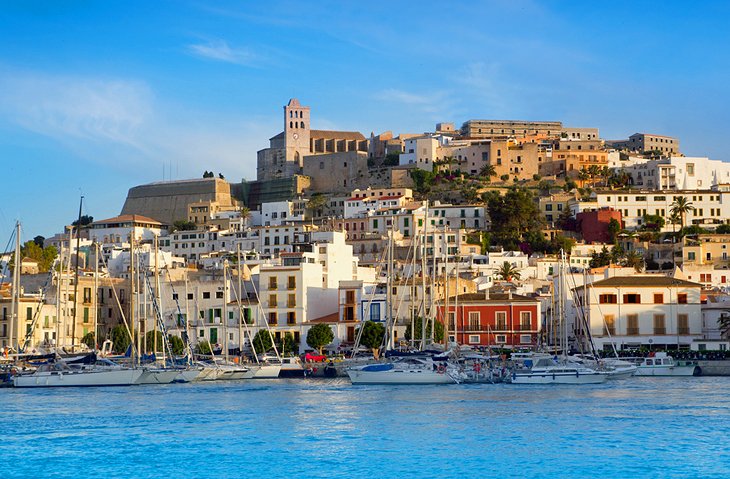
Postcard-perfect from every angle, the UNESCO-listed Dalt Vila is the Old Town of Eivissa that was the original medieval walled city. Here, tourists can discover a dreamy Mediterranean scene of quaint whitewashed houses cascading down to a vibrant waterfront. This little medieval world is enclosed within ancient walls on a hilltop above the rest of the town. Inside the ramparts, the Dalt Vila is a labyrinth of narrow cobblestone streets, winding pedestrian lanes, and grand historic houses.
The town's fortifications were built in the 16th century on top of the remains of the Moorish walls, with three gates and seven corner bastions. The main entrance gate is the Puerta de las Tablas featuring the coat of arms of King Philip II, and one of the former bastions now houses part of the Museum of Contemporary Art. This collection presents works created on the island of Ibiza since the 1960s, as well as exhibits of photography, screen-printed posters from the 1970s, and Japanese prints.
Soaring above all the other monuments is the Old Town's crowning glory, the Catedral de Nuestra Señora de las Nieves (Cathedral of Our Lady of the Snows). The cathedral was built in the 13th and 14th centuries on the site of the Yebisah Mosque, dating to the era of Islamic rule. Originally the cathedral was Gothic but was renovated in the 18th century in Baroque style. Visitors are impressed by the austere and imposing exterior with its prominent flying buttresses. From the terrace on the south side of the cathedral, tourists can take in the marvelous views of the bay.
2. Palma de Mallorca (Mallorca Island)
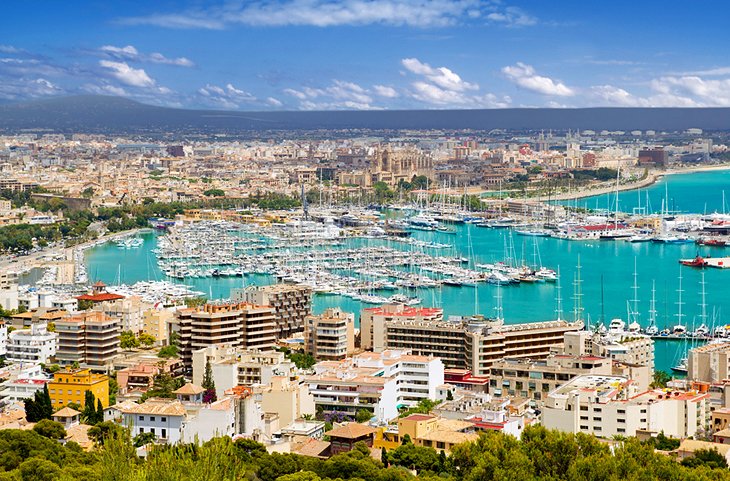
Nestled along the Bay of Mallorca, this elegant capital city is full of historical and cultural attractions. Presiding over the scenic harbor of the Old Town, the Catedral de Mallorca (also known as "La Seu") creates a magnificent impression from across the bay with its spires and towers soaring high above town. Another important landmark in the Old Town is the 13th-century Palau de l'Almudaina (open to the public for visits), originally a Moorish fortress that was converted to a royal palace for the Catholic monarchs in the 14th century.
The bustling La Lonja fish market at the Old Town's harbor and the Plaza Mayor, the Old Town's main square, are also worth visiting. Tourists should save time for simply strolling the Old Town's maze of atmospheric narrow streets while browsing the enticing boutiques (especially on Carrer de Sant Feliu) and perhaps stopping at an outdoor café or relaxing in one of the pleasant squares.
For those who love art museums, must-see attractions are the Museu de Mallorca (archeology, fine arts, and decorative arts collections) and the Fundació Miró Mallorca, a cultural center that presents exhibits of the artist's work. The Miró Foundation is housed in the art studio of Joan Miró, which was also his residence for nearly 30 years.
Many tourists come to Palma de Mallorca just for the sunshine and sandy beaches. With its year-round balmy weather, Palma de Mallorca is a perfect place for a seaside holiday. About 10 kilometers from Palma de Mallorca, the Playa de Palma is one of the island's best beaches and has good facilities. Near Playa de Palma is the Playa del Arenal, an expansive palm-fringed beach adjoined to a yacht marina. The yacht club at the marina offers sailing lessons and hosts sailing competitions.
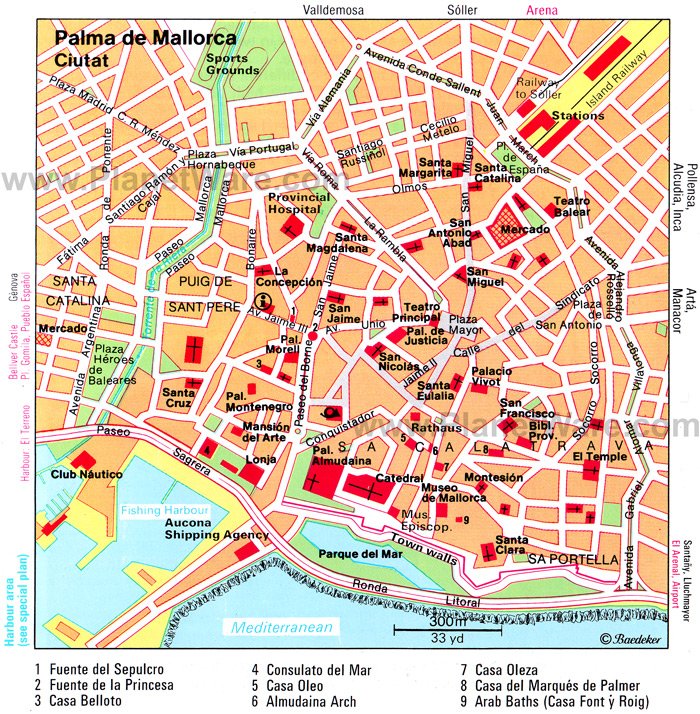
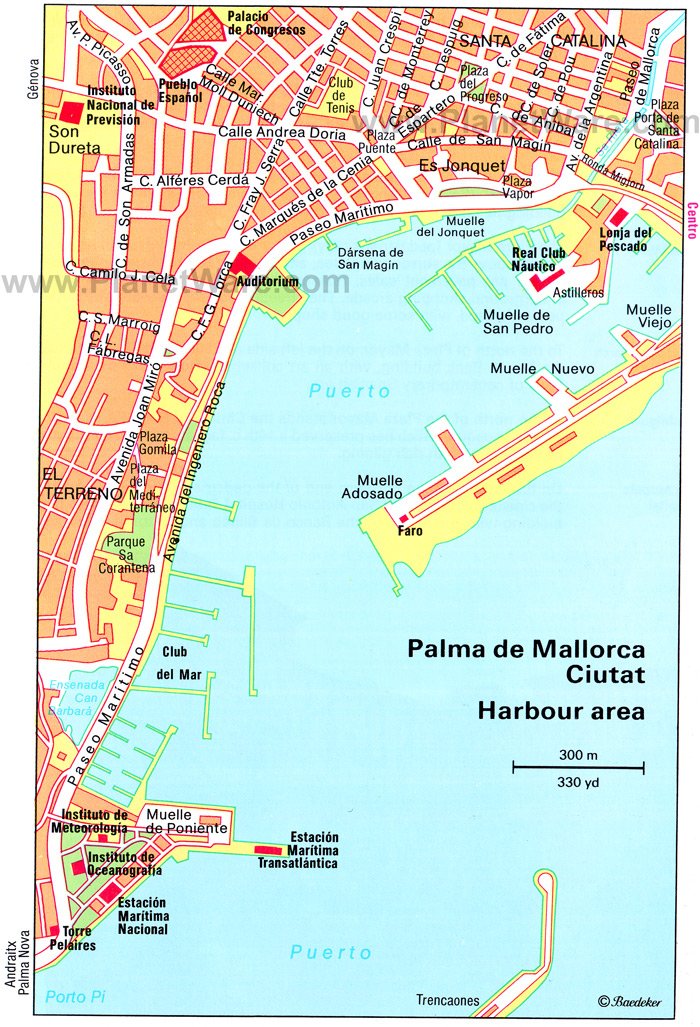
3. Beautiful Beaches on Formentera Island
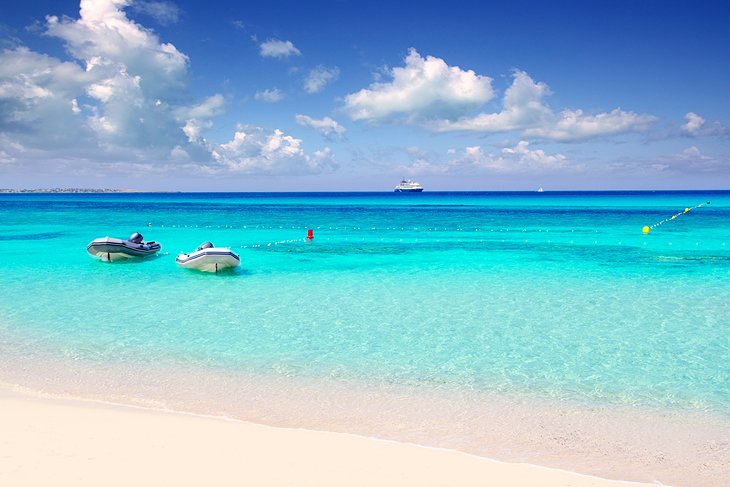
Less touristy than Ibiza and Mallorca, idyllic Formentera offers a blissful escape to nature. This tiny island's pristine coastline has beautiful secluded beaches and an unspoiled environment, ideal for relaxation. The island also features a splendid Mediterranean landscape with 100 kilometers of hiking routes that allow visitors to enjoy the natural scenery. It's also possible to get around the island by bicycle. The main port of Formentera Island is La Savina, where the ferry arrives from Eivissa on Ibiza Island.
Nearby La Savina (about four kilometers away) is the historic town of Sant Francesc de Formentera, which is full of cultural attractions. The town's 18th-century parish church is noteworthy for its fortified architecture, while the somber 13th-century Sa Tanca Vella chapel provided shelter during pirate raids. Sant Francesc de Formentera also has an Ethnography Museum and many boutiques in the center of town.
Formentera Island has beautiful beaches within the Parque Natural de Ses Salines. The island's most famous beach is the Playa de Ses Illetes (four kilometers from La Savina), set in an idyllic location with views across the sea to the Island of Ibiza. Visitors are awed by the paradisiacal scenery, featuring a fine white-sand shoreline and translucent turquoise waters. The beach has gentle shallow waters, resembling a swimming pool, so it's safe for children. The conditions are perfect for swimming, windsurfing, and sailing. The park charges an entrance fee, but the facilities are limited.
Near the Playa de Ses Illetes and also within the boundaries of the Parque Natural de Ses Salines nature reserve, the Playa de Llevant (about three kilometers from La Savina) has a fine white-sand shoreline and calm, crystal-clear waters that attract sunbathers and water sports enthusiasts. Although this beach is isolated, it does have amenities, including snack bars and beach equipment rentals (sun parasols, lounge chairs, and nautical gear). An entrance fee to the Ses Salines Natural Park is required to access this beach.
The most remote and idyllic beach is found at Cala Saona on the west coast of Formentera Island. In a peaceful bay surrounded by cliffs, this sheltered beach has a wide, sandy shoreline and gentle turquoise waters. There are almost no waves, and the water is only about knee-deep for a long distance from the shoreline. Cala Saona is a good spot for sunbathing and splashing around, as well as for water sports, especially snorkeling, paddle-boarding, and kayaking.
For those seeking overnight accommodations, Es Pujols is a great place to stay. This relaxing yet lively town has many restaurants and shops. There is also a gorgeous beach with a wide shoreline of fine white sand and tranquil waters ideal for swimming, as well as water sports. Alongside the beach is a promenade that's busy during the daytime and where people leisurely stroll in the evenings.
4. The Medieval Walled Town of Alcúdia (Mallorca Island)
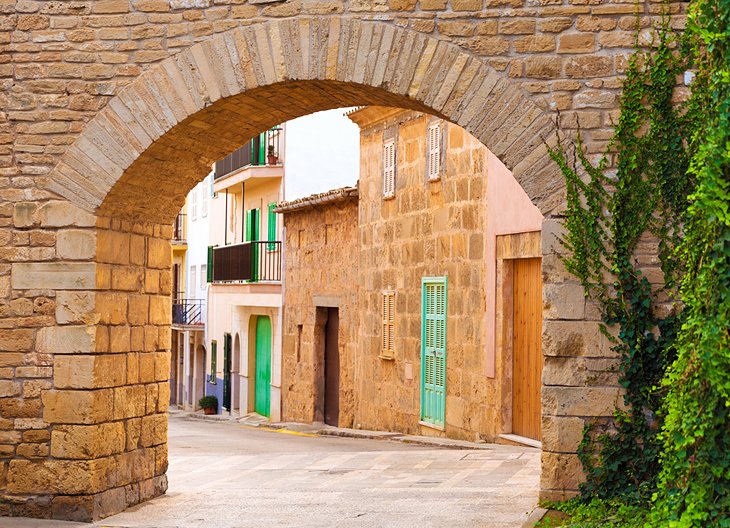
This well-preserved fortified medieval town offers the charm of old-world Europe. Enclosed within the ancient ramparts, Alcúdia's historic center is an enchanting warren of cobblestone pedestrian streets and handsome stone buildings. While strolling through the walled town, visitors will notice many beautiful churches, as well as stately aristocratic houses featuring coats of arms and windows adorned with Renaissance-era decorations.
An interesting attraction near the 13th-century Sant Jaume Church is the archaeological site that represents the Roman city of Pollentia dating from the 1st-century BC. The site features the remains of classical-era Roman houses, a Roman Theater, and a forum. The Museu Monográfico de Pollentia displays artifacts that were uncovered at archaeological excavations of the Pollentia site. The museum's collection exhibits ancient jewelry, kitchen utensils, sculptures, and architectural elements.
After sightseeing, tourists can wander the town and find a spot to relax. Alcúdia has many inviting restaurants and cafés with pleasant outdoor terraces. Alcúdia is also renowned for its traditional festivals and cultural events, such as the Holy Week festivities during Easter, the Via Fora street theater (historical reenactments) in July and August, the Muestra de Teatro performances of classical antiquity at the Roman Theater in July and August, and the Fiestas de Sant Jaume held every year on July 25th.
On Tuesdays and Sundays (9am - 2pm), the colorful Alcúdia Market brings together vendors of fresh fruits and vegetables from local farms, as well as clothes, jewelry, and other products.
About three kilometers away from Alcúdia, the Port d'Alcúdia is a family-friendly seaside resort with a wide variety of hotels and a lovely sandy beach. The old fishing harbor of Port d'Alcúdia shares space with a marina where luxury yachts are docked alongside the humble fishing boats. Tourists will enjoy taking a stroll along the harbor's promenade or stopping for an authentic seafood meal at one of the waterfront restaurants.
About a one-hour drive from Alcúdia is the Parc Natural de la Península de Llevant, which has many fabulous hiking trails. A truly spectacular hike is the five-kilometer climb from the village of Betlem to the Ermita de Betlem through a rugged Mediterranean landscape in the Serra de Llevant mountain range. The challenging, narrow, winding path rewards hikers with exceptional vistas from the hilltop hermitage, at 300 meters above the sea. The Ermita de Betlem was founded by the monks of Saint Honoratus in 1805 and is surrounded by orchards.
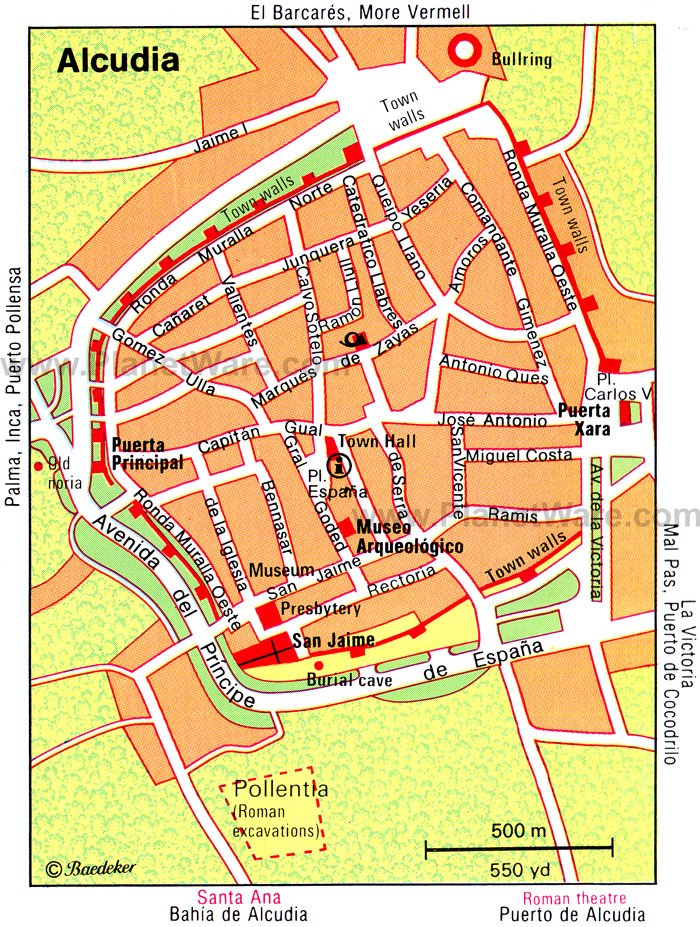
5. Real Cartuja de Valldemossa (Mallorca Island)

Perched on a hilltop of the Tramuntana Mountains overlooking the Mediterranean Sea, this quaint country village is surrounded by wooded hills, orchards, and olive groves. Visitors will enjoy strolling the narrow cobblestone lanes and admiring the old stone buildings with bright green shutters. Many of the pedestrian streets are lined with restaurants, cafés, bakeries, souvenir shops, and artisan craft boutiques. Valldemossa is also a pleasant place to spend the night.
The must-see sight of Valldemossa is the Real Cartuja de Valldemossa (Royal Carthusian Monastery of Valldemossa) that was originally built as a royal residence in the 13th century. The famous composer Chopin rented a room here with novelist Aurore Dupin (George Sand) during the winter of 1838-1839; they both were inspired artistically by the beauty of the monastery and its serene natural setting. In August, the Carthusian Monastery hosts the Chopin Festival, which invites high-caliber pianists to perform works by Chopin, as well as other classical music pieces.
The gorgeous Mediterranean landscape of the UNESCO-listed Serra de Tramuntana around Valldemossa inspires hikers and nature lovers. The Archduke's Path (created by the Austrian Archduke Ludwig Salvator) begins in the village of Valldemossa and follows an 11-kilometer loop trail (without signposts) through rugged mountainous terrain, oak groves, and pine forests. This moderately difficult hiking route affords breathtaking panoramic vistas of the dramatic coastline and Tramuntana Mountains.
Also part of the municipality is the Port de Valldemossa (seven kilometers from Valledemossa), an old fishing village with a lovely harbor and a tiny pebble beach. This area is known for its superb cuisine. Locally caught fish is combined with fresh produce from the surrounding farms, creating tantalizing dishes. The Port de Valldemossa has several excellent restaurants hidden on quiet side streets. Right on the harbor, the Restaurante Es Port is a popular establishment renowned for its high-quality seafood and traditional Spanish dishes.
Continuing 10 kilometers from Valldemossa is the alluring mountain town of Deià nestled in a valley above the sea. This quaint village has attracted artists and writers since the 1930s.
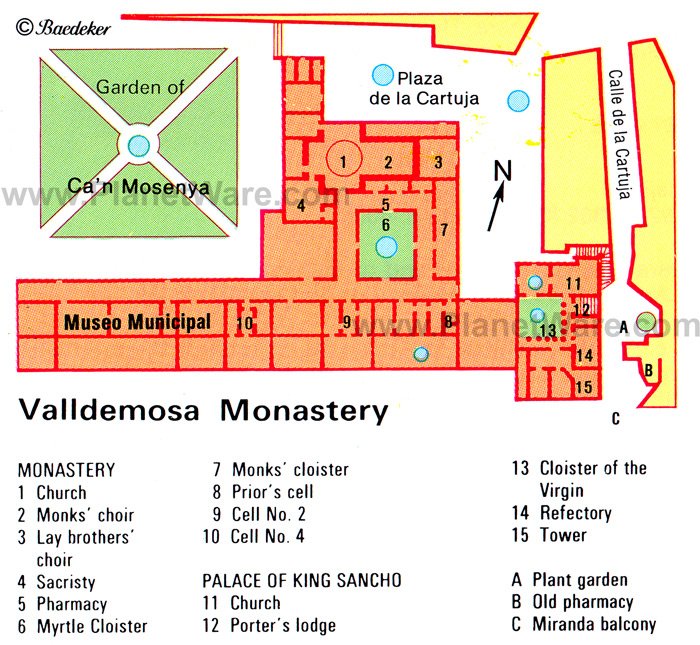
6. Parque Natural de Ses Salines (Formentera Island)
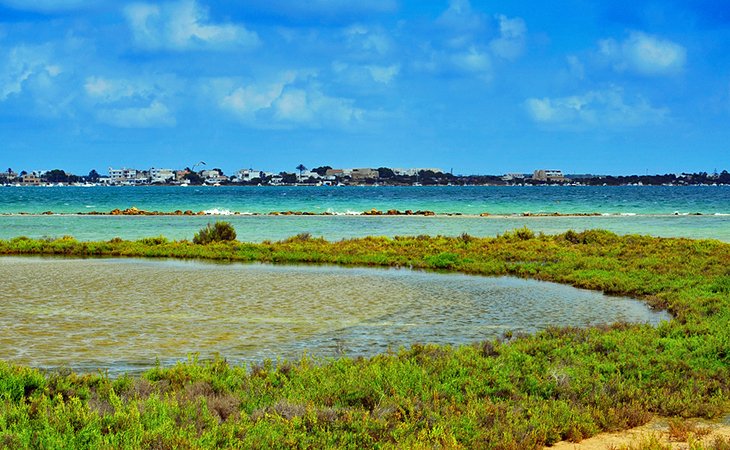
Listed as a UNESCO-World Heritage Site, the Natural Park of Ses Salines is a nature reserve that encompasses the area of southern Ibiza Island and northern Formentera Island, as well as the sea channel in between the two islands. The majority (75 percent) of the natural park covers water and contains Posidonia, an endemic aquatic plant that only grows here. The other aspect of the park is the land (around 2,000 hectares) covered with salt flats, wetlands, sand dunes, beaches, and pine forests. The Welcome Center of Ses Salines Natural Park is located in Can Marroig on Formentera Island.
Bird-watchers will be delighted by the chance to view more than 200 different species of birds. Pink flamingos, Audouin's gulls, and the Balearic shearwater can be spotted here. On Ibiza Island, the Interpretation Center of Las Salinas in Sant Francesc de s'Estany (housed in the 18th-century Iglesia de Sant Francesc) presents exhibits about the park's flora and fauna. Nearby is a bird-watching viewing platform. The interpretation center also loans binoculars for bird-watching.
Besides bird-watching, other things to do at the Parque Natural de Ses Salines include taking scenic walks and visiting the salt flats. The park's historic salt flats have been used to produce salt for centuries and provided impressive revenues that helped to build the Dalt Vila of Ibiza Island. The best place to see the salt fields is in Las Salinas (near the Playa de Ses Salines) on Ibiza Island, where visitors are wowed by the mountains of naturally dried sea salt.
Within the nature reserve is a beach that ranks among Ibiza Island's top-rated beaches. The Playa de Ses Salines (Las Salinas Beach) is a long, expansive swath of fine powdery sand lapped up by crystal-clear waters. Although this beach is surrounded by pine forests and seems remote, it gets very crowded during the summertime. Las Salinas Beach is well prepared for the hordes of sun-worshipping visitors with its restaurants, snack bars, and rentals of lounge chairs and sun parasols. Lifeguards survey the beach during the high season.
7. Mahón: Capital of Menorca Island
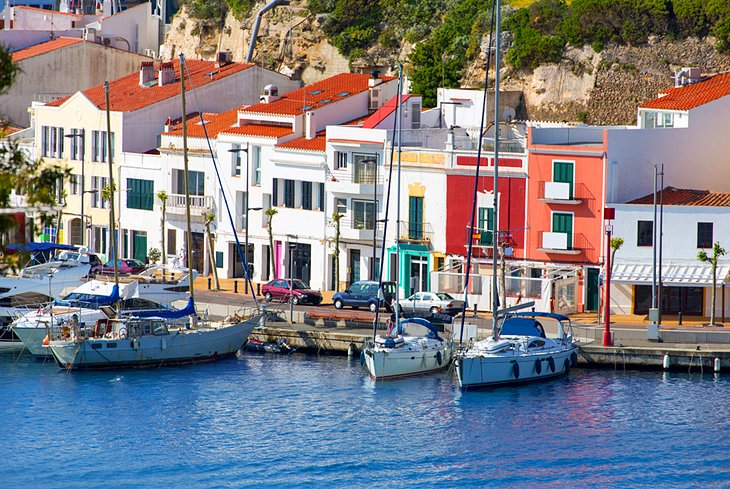
At the eastern end of Menorca Island, the capital city of Mahón (Maó) stands on a steep hillside above a large natural harbor. In a strategic location, the port is sheltered from wind and inclement weather. Visitors arriving by sea will be delighted by the scenery as the boat makes its way past old forts, islands, and coves toward the harbor.
Mahón is a laid-back town with a slow pace. Visitors can take leisurely strolls through the atmospheric cobblestone streets while admiring the sea views. At the center of Mahón, is the Plaza de España, a spacious town square, which can be reached via a pedestrian staircase from the port. The Plaza de España branches out to many streets lined with shops and restaurants. A favorite aspect of the the Plaza de España is its fresh fish market (the Mercat del Peix). A section of the market offers delicious tapas along with a convivial ambience.
Just a few steps away from the Plaza de España is the Iglesia del Carmen, a Carmelite church with an adjoining cloister. The arcades of the cloister are now used as a venue for the town's traditional market, the Mercat des Claustre. Held every day of the week from morning until the afternoon, this bustling market includes stalls selling fruits, vegetables, other food products, clothing, jewelry, and typical items from Menorca.
In the beginning of September, Mahón celebrates the Fiestas de La Mare de Déu de Gràcia de Maò. A joyous several-day event honoring the Virgen de Gràcia, the festival features parades, a children's fair, musical entertainment, dancing, street parties, and fireworks.
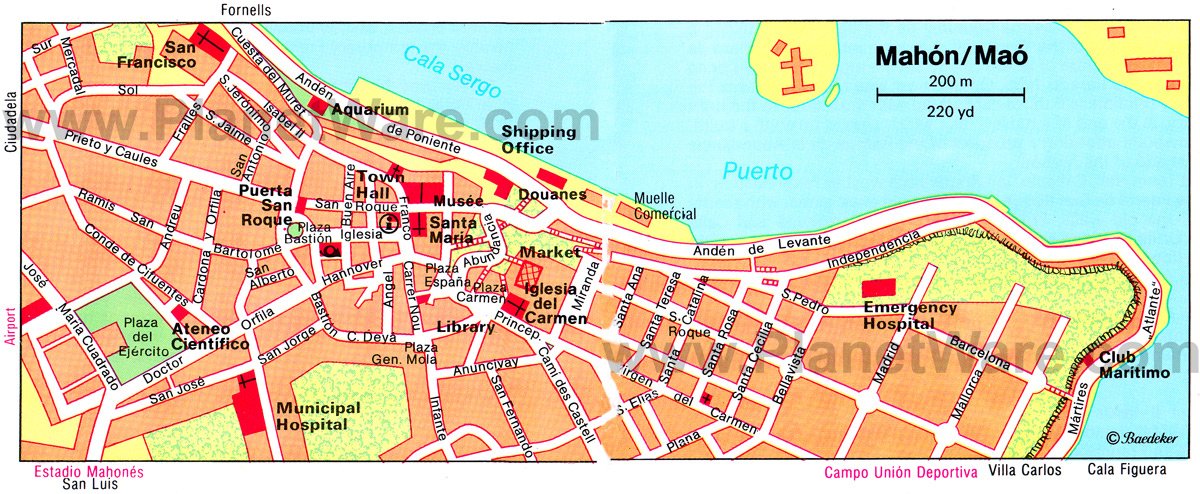
8. The Chic Seaside Resort of Puerto Portals (Mallorca Island)
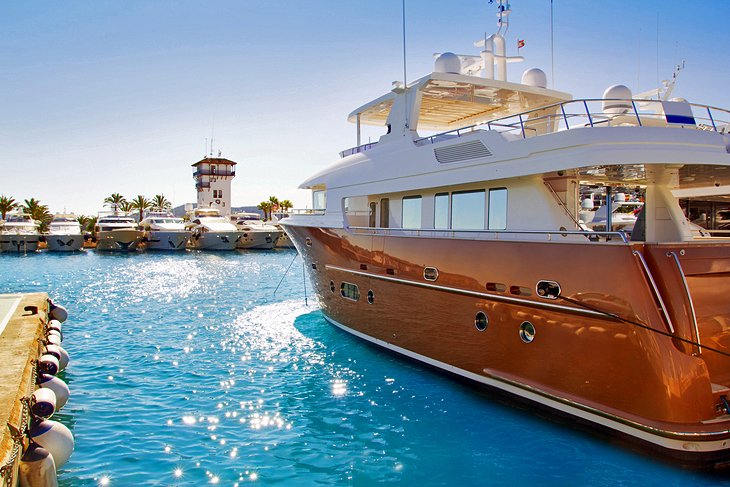
A destination for nautical excursions and summertime beach vacations, Puerto Portals is the place to see and be seen in Mallorca. This glamorous seaside resort on the Bay of Palma (10 kilometers from Palma de Mallorca) appeals to a chic clientele who appreciate flashy cars, fancy yachts, fashionable dining, and designer boutiques. Drawing a stylish international crowd, Puerto Portals has the glitzy feel of Monte Carlo in Monaco.
Along the picturesque marina, visitors will find hundreds of luxury yachts, a yacht club, and many upscale restaurants. Excellent dining options include the Ritzi Restaurant with its pleasant outdoor terrace by the marina and Cappuccino Grand Café, which also has a dining patio with views of the marina. A short drive (three kilometers) from Puerto Portals is the Michelin-starred Es Fum Restaurant in Costa d'en Blanes, which serves exquisite seasonal cuisine in an elegant dining room or on a terrace surrounded by perfectly manicured gardens, overlooking the Mediterranean Sea.
Near the Puerto Portals marina is a stretch of golden-sand beach. During summertime, the beach is covered with lounge chairs and sun parasols. Just a short drive (one kilometer) from Puerto Portals is a small but popular beach, the Playa Oratori de Portals, which has gentle crystal-clear waters and a waterfront snack bar.
Another lovely beach, the Playa de Portals Nous (about a five-kilometer drive from Puerto Portals) is tucked into a sheltered cove. Sunbathers flock to this 100-meter-long shoreline of fine white sand. The beach is also a popular spot for enjoying water sports such as kayaking, windsurfing, and pedal boating. Amenities include snack bars, cafés, and water sports gear rentals.
- 9. Cala Portinatx Beach Resort (Ibiza Island)
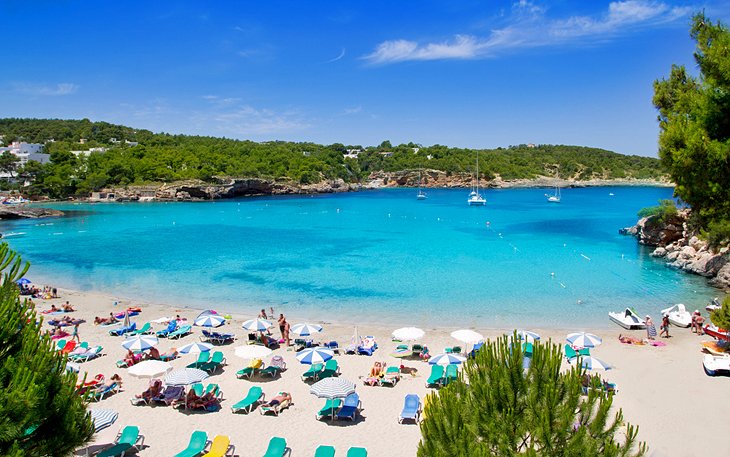
On the northern tip of Ibiza Island, the Cala Portinatx is a family-friendly resort area with a wide selection of hotels. The climate is perfectly balmy, and the coastline features turquoise waters that appear tropical. Cala Portinatx boasts some of the best beaches of Ibiza, with sandy shores and gentle waves. The Cala Portinatx beaches also offer excellent facilities and tourist services, including public toilets, showers, restaurants, shops, snack bars, boat and waterski rentals, and lounge chairs available for hire.
Cala Portinatx has three popular sandy beaches. The Playa de s'Arenal Gros is the largest, a 125-meter-long stretch of fine white sand. The only beach on Cala Portinatx with lifeguards, the S'Arenal Gros is an ideal place for swimming, boating, and waterskiing. Families with kids will love the waterslide park. The Playa de s'Arenal Petit is a smaller beach with a shallow seabed, which makes the waters safe for children to splash around. The Playa Porto is a quiet beach tucked into a small cove (a little fishing port), surrounded by a grove of pine trees.
The Cala Portinatx bay is sheltered from the open sea by a rock barrier, protecting against tidal action and waves. The calm waters make swimming safe. Snorkelers and scuba divers also appreciate the tranquil sea and prize the crystal-clear waters.
Ferry boats sail from Cala Portinatx to the sandy beach of Puerto de San Miguel and the trendy resort of San Antonio, which has many cafés and beach clubs with a legendary nightlife scene.
10. The Prehistoric Site of Talatí de Dalt (Menorca Island)
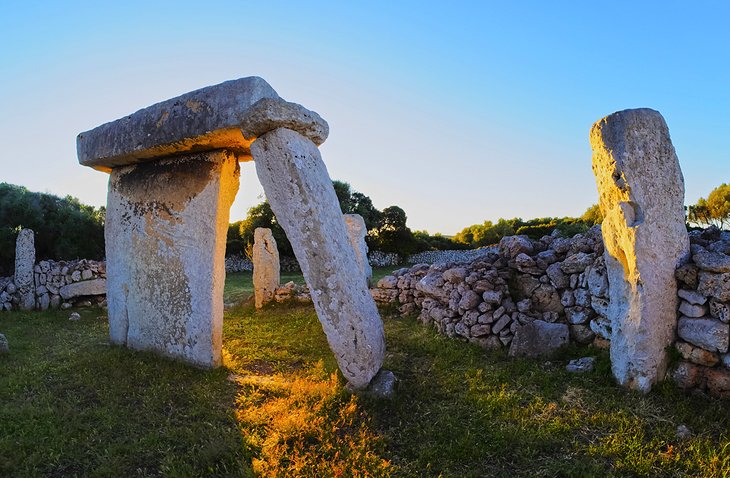
This rare prehistoric site is five kilometers west of Mahón in a rural landscape of stunning beauty. The megalithic monument, Talatí de Dalt, is a taula (T-shaped structure) topped with a thick stone slab supported by a central monolith and partially surrounded by a cyclopean wall.
Built around 1300 BC, the Talatí de Dalt is a prehistoric sanctuary that belonged to one of the most important Bronze Age settlements on the Island of Menorca. The site also features underground chambers that may have been used as dwellings.
Visiting the Talatí de Dalt requires a car (no public transportation is available). The site is open daily from April through October and charges a small admission fee.
Comments
Post a Comment